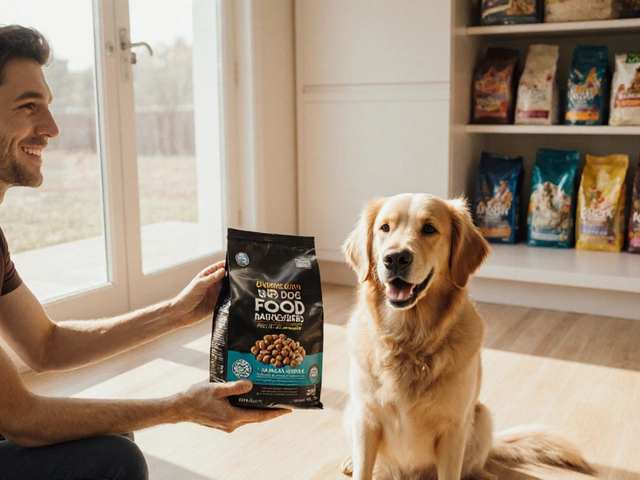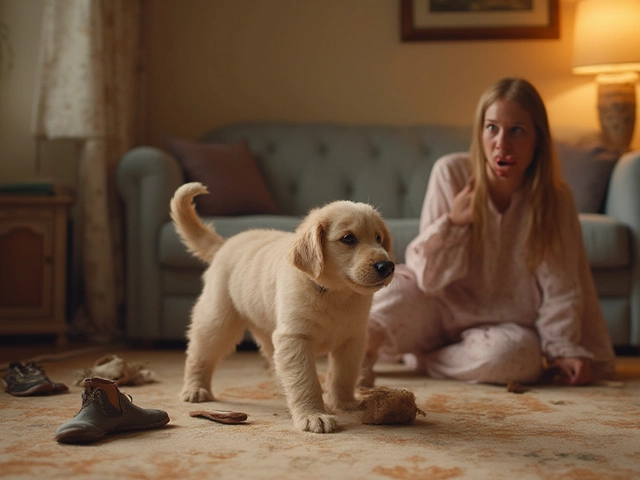When it comes to training our furry friends, the idea of using a shock collar might cross our minds—mostly because it sounds like a quick fix. But hold on, have you ever thought about what these collars actually do?
Shock collars, sometimes called e-collars or electronic collars, are supposed to discourage unwanted behavior by delivering a zap of electric current. Sounds intense, right? It is. Sure, they might get a dog’s attention, but at what cost?
Let's dig into why these collars aren't as useful as they might seem and how opting for more humane methods can make lives better—for you and your four-legged pal. You'll find that focusing on kindness and communication can lead to a much more rewarding relationship with your dog.
- Understanding Shock Collars
- Potential Harm to Dogs
- Effective Alternatives
- Creating a Positive Environment
Understanding Shock Collars
Alright, let's talk about what shock collars are all about. Essentially, these gadgets are designed to correct pet behavior by delivering a jolt of electricity. Often touted as quick solutions, these devices send a signal straight to your dog's collar when they do something they're not supposed to, like barking excessively or straying out of the yard.
The idea is that your dog associates the uncomfortable sensation with their actions and learns not to repeat them. But here's where it gets tricky. While it may sound straightforward, it brings up a lot of concerns regarding safety and well-being.
Shock collars typically come with different levels of intensity. And while manufacturers argue they are safe, the reality is not so black and white. Just think about it—what seems mild to us can be pretty startling to a dog. The shock can range from a light tickle to something stronger, and not all dogs react the same way. Some might just get scared, while others could start acting out even more.
These collars usually have a remote control so pet parents can decide when to activate the shock. Some even come with automatic triggers, like when they hear barking. It's crucial to understand that while a shock collar might seem like an easy way to train, it doesn't encourage trust or affection, which are what most dog owners truly desire.
| Feature | Description |
|---|---|
| Manual Remote Control | Owners can trigger the shock using a remote device. |
| Automatic Trigger | Activates shock when a certain sound or movement, like barking, occurs. |
| Intensity Levels | Adjustable shock intensity, often from mild to severe. |
The conversation around shock collars is not just about their physical impact. It's about what kind of relationship you want to build with your dog. Are you looking for obedience through fear, or a loyal bond built on trust and communication? Understanding the mechanics and implications of these devices is key in making the right choice for you and your furry friend.
Potential Harm to Dogs
Alright, so let's talk about why those shock collars might not be the best idea for your doggo. We love our pets, and the last thing we'd want is to inflict any kind of pain or fear on them, right? Well, that's exactly what these collars can do, often unintentionally.
First off, the whole point of a shock collar is to deliver a mild electric shock whenever the dog does something it's not supposed to. But the 'mild' part can be tricky. What feels like a tiny zap to you can feel like a bolt of lightning to your pup. This isn't just a scare; it's stress, it’s anxiety, and it can even lead to aggression over time.
In fact, a study from the University of Lincoln found that dogs trained with shock collars showed increased signs of distress. Imagine your dog being constantly on edge, unsure when the next uncomfortable shock might come. That's not the happy life they deserve.
Plus, these collars can sometimes malfunction. Imagine your pup getting zapped randomly for no reason—yikes! This unpredictability can confuse dogs and actually worsen their behavior. It's like punishing them without them knowing what they did wrong. It doesn’t help them learn; it just makes them scared.
Also worth noting is that shock collars might harm the bond between you and your dog. You're their favorite person in the whole wide world, and suddenly you're the one associated with unexpected pain. That's the quickest way to break trust.
Instead of relying on something that might hurt your furry friend, there are much better ways to guide them. Training should be about working together towards better behavior, not just forcing obedience through fear.

Effective Alternatives
All right, so you're convinced that a shock collar isn't the direction you want to go. Awesome! There are plenty of effective and humane ways to train your dog that won't involve fear or pain.
First up, consider positive reinforcement training. This method is all about rewarding your dog for good behavior rather than punishing bad behavior. Think of it as saying "great job" instead of "that's wrong." You can use treats, toys, or even just a good belly rub. Dogs love being told they're doing well, and they'll quickly learn what makes you happy.
Another cool option is using a clicker. You can pair the clicker with treats to mark the exact moment your dog does something right. Clicker training is super effective and many trainers swear by it. It’s a win-win for both of you!
Lately, we've seen a rise in popularity of harnesses and no-pull devices over traditional collars. These tools help manage pulling behavior during walks without causing discomfort. A calming harness, for instance, gently supports your dog and makes walks more enjoyable for both of you.
If you're dealing with more serious behavior issues, seeking a professional dog trainer or even a behaviorist can be a game changer. Professionals can provide customized training plans suited for your dog's needs and your lifestyle.
- Positive Reinforcement: Uses rewards to reinforce good behavior.
- Clicker Training: Marks correct behavior with a click, usually paired with a treat.
- No-Pull Harnesses: Helps control the dog without discomfort.
- Professional Training: Tailored advice for complex behavioral issues.
Training is all about creating a strong, trusting relationship with your dog. So, ditch the shock collars and try these supportive and successful strategies!
Creating a Positive Environment
Building a happy and healthy setting for your dog goes way beyond just using the right training tools. It's all about the vibe you create at home and how you interact with your pet. Forget the shock collar; think about setting up a space where your dog feels safe and loved.
First things first, consistency is key. Dogs thrive under a routine, just like some of us who love a scheduled coffee break. Setting specific times for meals, walks, and play can help your dog feel more secure. But it's not just about the clock; consistency in your commands and rewards is crucial too.
Use positive reinforcement. Studies have shown that dogs do better with praise and rewards rather than punishment. When your furry friend obeys a command or behaves well, give them a treat, a belly rub, or an enthusiastic "good boy!" It’s these little rewards that make training more effective and your dog happier.
If you’re working on breaking a bad habit, patience and redirection can work wonders. For instance, if your dog is chewing up shoes, instead of scolding (and reaching for that shock collar), offer a toy instead. Teach them what's okay to chew on without making it a big drama.
Don’t underestimate the power of mental stimulation either. Dogs love a good challenge! Interactive toys, puzzle feeders, and sniffing adventures can help keep their brains sharp and behavior positive. Plus, it tires them out just as much as a long walk (which is a win-win, right?).
Also, every dog needs some personal space. Make sure they have a comfortable spot to call their own. Whether it’s a cozy bed or a quiet nook, having a retreat can calm your pup during stressful times.
And hey, while we're talking about positive vibes, remember that your mood impacts your dog too. If you're stressed, they notice. Try to keep things chill and remember, the relationship you have with your dog is a two-way street.
In the end, creating a positive environment is about understanding and respect. By focusing on these aspects, you're not just improving your dog's life—you're enhancing yours too. Isn't that the kind of bond we all dream of having with our pets?





